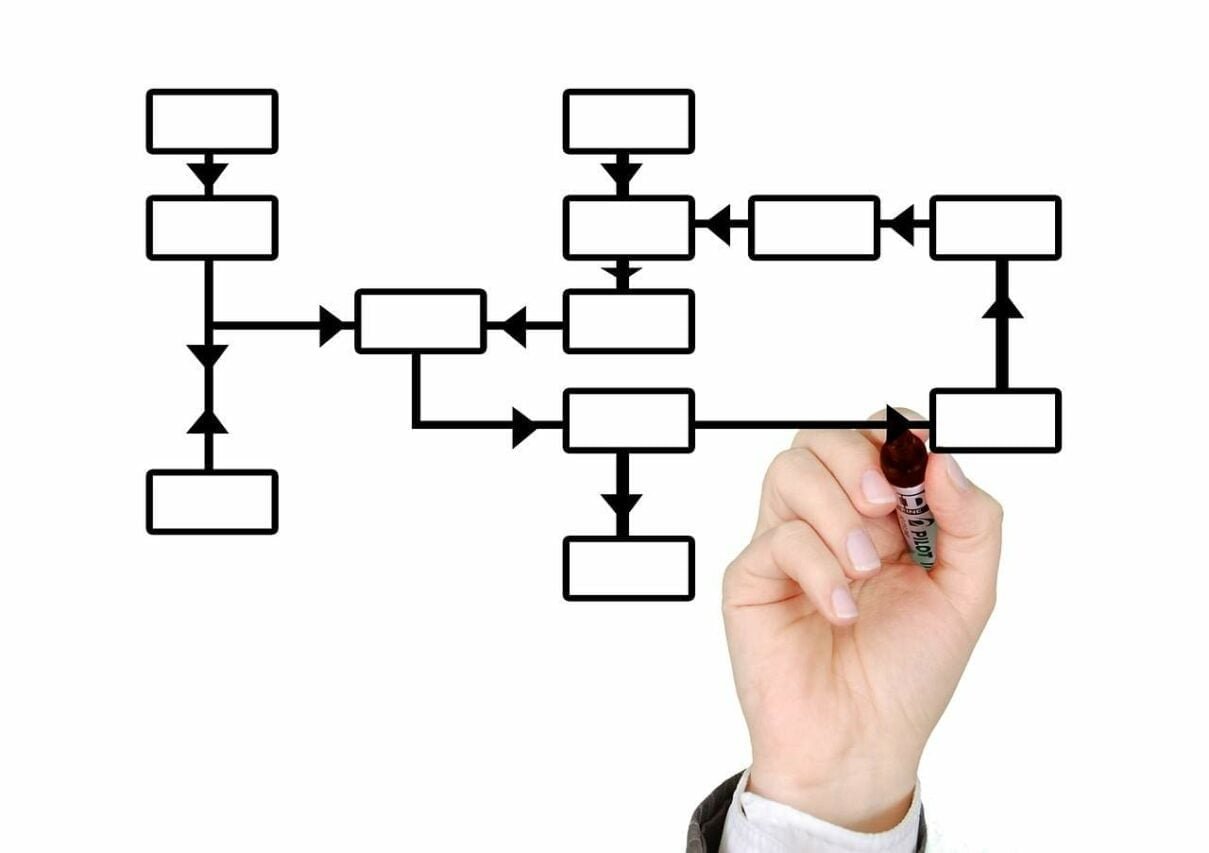Learn and Understand, Explain are the Features, Natures, Characteristics of Planning!
Planning is a particular type of decision making that addresses the specific future that managers desire for their organizations. It is the process of fixing goals of the business and finding the ways to attain these goals. The plan will help the managers to organize people and resources effectively. Plans develop confidence in managers. Also, the importance of planning in management, Explain are the Features, Nature, Characteristics of Planning!
Planning is the first managerial function to perform in the process of management. It is concerning with deciding in advance what is to do, when, where, how and by whom it is to do. Thus, it is a predetermined course of action to achieve a specified aim or goal.
All organizations whether it is the government, a private business or small businessman require planning. To turn their dreams of increase in sale, earning the high profit and getting success in business all businessmen have to think about future; make predictions and achieve the target. To decide what to do, how to do and when to do they do planning.
Meaning of Planning!
Planning can define as “thinking in advance what is to do when it is to do, how it is to do and by whom it should do”. In simple words we can say, planning bridges the gap between where we are standing today and where we want to reach.
Planning involves setting objectives and deciding in advance the appropriate course of action to achieve these objectives. So, we can also define planning as setting up of objectives and targets and formulating an action plan to achieve them.
Another important ingredient of planning is time. Plans are always developing for a fix time period as no business can go on planning endlessly.
Keeping in mind the time dimension we can define planning as “Setting objectives for a given time period, formulating various courses of action to achieve them and then selecting the best possible alternative from the different courses of actions”.
The definitions of planning given by the different writers are listing here.
In the words of Alfred and Beatty, “Planning is thinking process, the organizing foresight, the vision based on facts and experience that is requiring intelligent action.”
According to Koontz and O’Donnell, “Planning is essentially decision-making since it involves choosing from among alternatives.” According to George Terry, “Planning is the selecting and relating of facts and making and using of assumptions regarding. The future in the visualization and formulation of proposing activities believes necessary to achieve the desired results.”
The following Features, Nature, Characteristics of Planning are!
1. Planning contributes to Objectives:
Planning starts with the determination of objectives. We cannot think of planning in absence of objective. After setting up of the objectives, planning decides the methods, procedures, and steps to take for the achievement of set objectives. Planners also help and bring changes in the plan if things are not moving in the direction of objectives.
For example, if an organization has the objective of manufacturing 1500 washing machines and in one month only 80 washing machines are manufacturing. Then changes are making the plan to achieve the final objective.
2. Planning is the Primary function of management:
Planning is the primary or first function performing by every manager. No other function can execute by the manager without performing planning function because objectives are set up in planning and other functions depend on the objectives only.
For example, in organizing function, managers assign authority and responsibility to the employees and level of authority and responsibility depends upon objectives of the company. Similarly, in staffing, the employees are appointed. The number and type of employees again depend on the objectives of the company. So planning always proceeds and remains at no. 1 as compared to other functions.
3. Pervasive:
Planning is requiring at all levels of the management. It is not a function restricted to top-level managers only but planning is done by managers at every level. Formation of major plan and framing of overall policies is the task of top-level managers whereas departmental managers form the plan for their respective departments. And lower level managers make plans to support the overall objectives and to carry on the day to day activities.
4. Planning is futuristic/Forward-looking:
The Planning always means looking ahead or planning is a futuristic function. A Planning is never done in the past. All the managers try to make predictions and assumptions for future and these predictions are creating on the basis of past experiences of the manager and with the regular and intelligent scanning of the general environment.
5. Planning is continuous:
Planning is a never-ending or continuous process because after making plans also one has to be in touch with the changes in changing the environment and in the selection of one best way.
So, after making plans also planners keep making changes in the plans according to the requirement of the company. For example, if the plan is made during the boom period and during its execution. There is depression period then planners have to make changes according to the conditions prevailing.
6. Planning involves decision making:
The planning function is needed only when different alternatives are available and we have to select the most suitable alternative. We cannot imagine planning in absence of choice because in planning function managers evaluate various alternatives and select the most appropriate. But if there is one alternative available then there is no requirement of planning.
For example, to import the technology if the license is only with STC (State Trading Co-operation) then companies have no choice but to import the technology through STC only. But if there are 4-5 import agencies including in this task then the planners have to evaluate terms and conditions of all the agencies and select the most suitable from the company’s point of view.
7. Planning is a mental exercise:
It is the mental exercise. Planning is a mental process which requires higher thinking that is why it is kept separate from operational activities by Taylor. In planning assumptions and predictions regarding future are made by scanning the environment properly. This activity requires the higher level of intelligence. Secondly, in planning various alternatives are evaluated and the most suitable is selected which again requires the higher level of intelligence. So, it is right to call planning an intellectual process.
Main Nature or Characteristics of Planning!
The following are the important characteristics of planning:
1. Focus on objectives.
A plan starts with the setting of objectives and then makes efforts to realize them by developing policies, procedures, strategies, etc.
2. It is an intellectual process.
According to Koontz and O’Donnell, planning is an intellectual process involving mental exercise, foreseeing future developments, making forecasts and the determination of the best course of action.
3. Planning is a selective process.
It involves the selection of the best one after making a careful analysis of various alternative courses of action. It is concerning with decision-making relating to (a) what is to do, (b) how it is to do, (c) when it is to do, and (d) by whom it is to do.
4. Planning is pervasive.
Planning is a pervasive activity covering all the levels of an enterprise. While top management is concerning with strategical planning, the middle management and the lower management are concerning with administrative planning and operational planning respectively.
5. Planning is an integrated process.
Planning involves not only the determination of objectives but also the formulation of sound policies, programmes, procedures and strategies for the accomplishment of these objectives. It is the first of the managerial functions and facilitates other managerial functions like organizing, staffing, directing and controlling.
6. Planning is directed towards efficiency.
To increase the efficiency of the enterprise is the main purpose of planning. The guiding principles of a good plan are the maximum output and profit at the minimum cost. Terry has aptly stated that “planning is the foundation of the most successful action of an enterprise.”
7. Planning is flexible.
The process of planning should be adaptable to the changes take place in the environment. Koontz and O’Donnell emphasize that “effective planning requires continual checking on events and forecasts and the redrawing of plans to maintain a course towards a designed goal.”
8. The first function in the process of management.
Planning is the beginning of the process of management. A manager must plan before he can possibly organize, staff, direct/control. Because planning sets all other functions into action, it can see as the most basic function of the management. Without planning, other functions become the meaningless activity, producing nothing, but chaos.
9. It is a decision-making process.
Decision-making is an integral part of planning. It is defined as the process of choosing among alternatives. Obviously, decision-making will occur at many points in the planning process. For example, in planning for their organization, the managers first decide which goals to pursue: shall we manufacture all parts internally or buy some parts from outside?
10. It is a continuous process.
Planning is a continuous process. Koontz and Donnell rightly observe that like a navigator constantly checking where his ship is going in the vast ocean, a manager should constantly watch the progress of his plans. He must constantly monitor the conditions, both within and outside the organization, to determine if changes are requiring in his plans.











